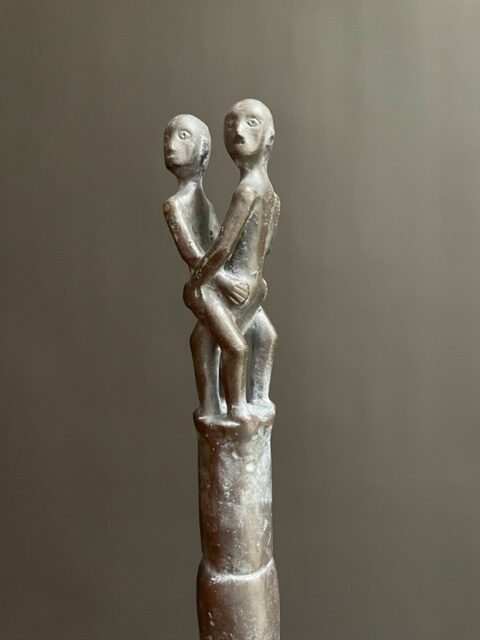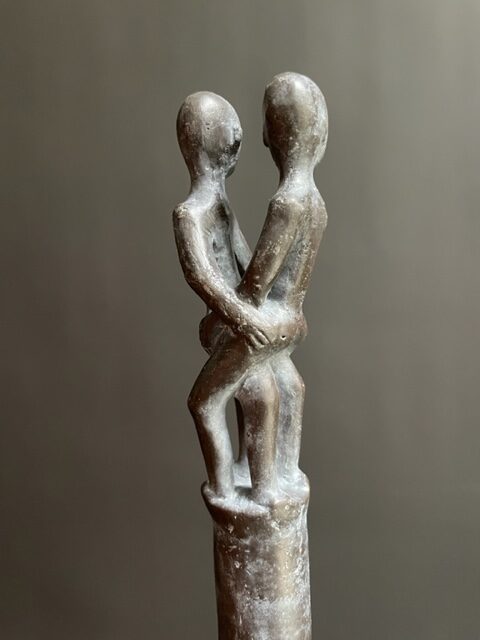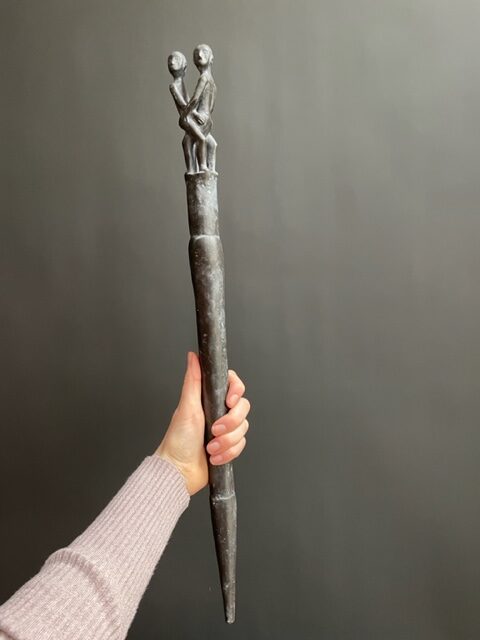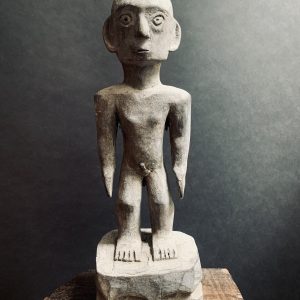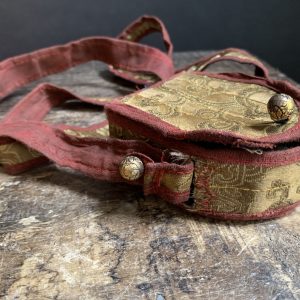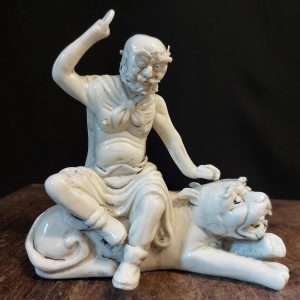Description
Ifugao scepter
This Ifugao scepter has two human figures at the top. These represent the bululs, the rice gods. Rice is the main source of food for the Ifugao and is therefore vital to them.
The bululs, strategically placed on rice terraces and in houses, are considered mediators between the human world and the spirit world. They serve as protectors of the crops and embody the spiritual power and wisdom of the ancestors. The worship and sacrifice of bululs during rituals and ceremonies reflect the profound spiritual and religious beliefs of the Ifugao community, which are rooted in a deep respect for nature and ancestors.
The bululs are revered not only for their symbolic significance, but also for their practical role in ensuring the fertility and abundance of the rice harvest. In times of ecological disturbance, such as drought, bululs are often associated with rituals and ceremonies designed to invoke divine intervention for rain and fertility.
As essential elements of Ifugao culture, bululs embody the community’s deep connection to the land and ancestors. Their role as protectors and mediators reflects the complex and symbiotic relationship between humans and nature, and emphasizes the importance of traditional knowledge and rituals in maintaining cultural identity and ecological balance.
Ifugao scepter
Deze scepter heeft bovenaan twee mensfiguren. Dit stellen de bululs voor, de rijstgoden. Rijst is de belangrijkste voedselbron voor de Ifugao en is daarom traditioneel gezien voor hen van levensbelang.
De bululs, strategisch geplaatst op de rijstterrassen en in huizen, worden beschouwd als bemiddelaars tussen de menselijke wereld en de geestenwereld. Ze dienen als beschermers van de gewassen en belichamen de spirituele kracht en wijsheid van de voorouders. De aanbidding en het offeren van bululs tijdens rituelen en ceremonies weerspiegelen de diepgaande spirituele en religieuze overtuigingen van de Ifugao-gemeenschap, die geworteld zijn in een diep respect voor de natuur en de voorouders.
De bululs worden niet alleen vereerd om hun symbolische betekenis, maar ook om hun praktische rol bij het waarborgen van de vruchtbaarheid en overvloed van de rijstoogst. In tijden van ecologische verstoring, zoals droogte, worden bululs vaak geassocieerd met rituelen en ceremonieën die bedoeld zijn om goddelijke interventie te smeken voor regen en vruchtbaarheid.
Als essentiële elementen van de Ifugao-cultuur belichamen bululs de diepe verbondenheid van de gemeenschap met het land en de voorouders. Hun rol als beschermers en bemiddelaars weerspiegelt de complexe en symbiotische relatie tussen mens en natuur, en benadrukt het belang van traditionele kennis en rituelen in het behoud van culturele identiteit en ecologisch evenwicht.


